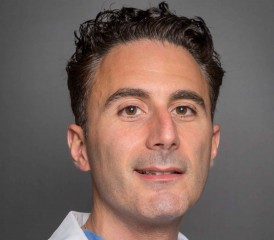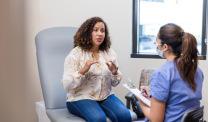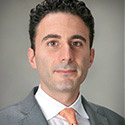Behind the White Coat: A Look at Patient-Doctor Relationships
Treatment & DoctorsWritten by Dr. Jacques Fontaine | Edited by Walter Pacheco

Every single day, I meet people looking for answers. Whether the patient was recently diagnosed with cancer and has questions or is waiting to hear about a terrifying diagnosis, my job is make them feel safe.
It’s not an easy task.
I have been a thoracic surgeon for 11 years.
For 11 years, I have been helping people cope with one of the most difficult times in their lives. From busy clinic days where I’m running between patient rooms to 16-hour long days in the operating room, I am surrounded by people making real decisions — decisions that will impact the rest of their lives.
Cancer Does Not Discriminate
I don’t have one type of patient. That’s the thing about cancer: It does not discriminate against age, gender, race or religion. It doesn’t care if you are rich or poor. Cancer targets everybody.
The moment I walk into the room with a new patient, I don’t always know what to expect. Sure, I know the results of their latest scans and whether I think they are a good surgical candidate, but I don’t really know them. Not yet at least.
Are they scared? Are they aware of the gravity of their situation? Will they have lots of questions? Will they say nothing at all?
People are different, but my job is the same.
Building an Intense Relationship in Minutes
Walking through that door, I have one goal: Build trust with a stranger.
I often compare my initial patient appointment to meeting your significant other for the first time.
Imagine this: You are at a cocktail party and you see a beautiful woman across the room. You make your way to her, and in just a few minutes, you need to make the right first impression. You need to show her that you are a worthwhile person — someone to be interested in. You need to gain her trust. How?
Of course, appearance matters. It’s how you look and what you wear. It’s the way you talk and the words you use. It’s how you bond. Will you only focus on her or will you continue to scan around the room?
Do you build a connection?
A patient appointment is much like this. Except instead of asking someone for their phone number or to go out to dinner, I’m asking them to trust me with their life. Maybe I’m asking a patient to trust me to perform a surgery. Or maybe I’m asking them to trust that surgery is not the answer. Either way, I only have a few minutes to build that connection.
Direction Depends on Diagnosis
After the initial meeting with a patient, the direction of our relationship can go a variety of ways.
If I truly think surgery will improve their prognosis — if surgery is their best option — we may grow closer quickly.
There is an inexplicable and powerful bond that forms when I place my hands inside someone’s body. When l am the one there when you open your eyes after surgery, and I check in with you in the hours, weeks and months following the procedure. I also share intense moments with the patient’s family when I finally meet them in the waiting room after several hours of surgery to discuss the much-anticipated outcome of the procedure.
If surgery is not the best way to treat their cancer in my opinion, then I will do what I can to connect a patient with the right doctor. Whether it’s one of my colleagues focused on chemotherapy treatments or leading a clinical trial in a promising new medication, I will not make one of my patients wait around and be confused without any direction or answers.
My job is to make them feel safe and secure. To make them feel like they are my only patient. To make sure one of my colleagues or I take care of them. That’s why cancer centers exist: To offer a multidisciplinary team with many great physicians all coming together to work as a team under the same roof.
On occasion, after more in-depth investigations, some of my patients don’t have cancer at all, and I am there to share that joy as well.
No matter what diagnosis or prognosis a patient receives, I do everything I can to help them in their journey with their cancer.
That means I need to help patients learn and understand their disease; I need to guide them to choose the best treatment option for them and help them as if they were one of my own family members.
The best way for me to do all that: Be there. Be present. Be their doctor.







